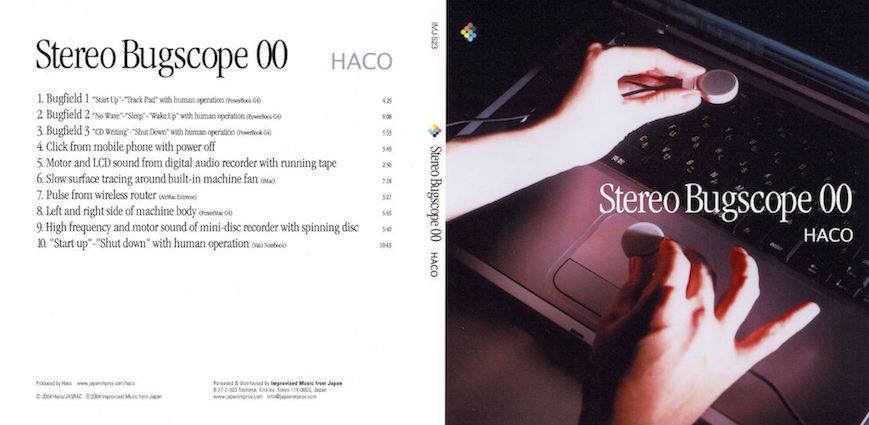

CD
Improvised Music from Japan, IMJ-523
Released on October 31, 2004
Purchase price in Japan: 2,000 yen (tax not included)
(For purchase outside of Japan, prices vary.)
Starting with her work in After Dinner in the '80s, up to her current activity as a soloist and in projects like the female trio Hoahio, and Yesterday's Heroes, with Terre Thaemlitz, Haco has long been the reigning songstress of avant-garde music. But she isn't only a highly acclaimed vocalist and composer/lyricist; she's been exploring areas unrelated to vocalizing or pop melodies, with projects that focus on the sounds that surround us in our daily lives. One of these is View Masters ("the sound collection and observation organization"); another is Stereo Bugscope, which is documented on this album.
The name "Stereo Bugscope" refers to a performance system that detects oscillating sounds emitted by the circuitry of electronic devices. It also signifies the act of listening to the electromagnetic world that emerges from the inside of devices such as computers, cell phones, MD players, and wireless routers through the use of two inductive microphones (pickups). The oscillating-circuit sounds come from the IC board and clock, and the electromagnetic noise comes from the electrical current that turns the fan and drives the motor. These signals are ordinarily so faint as to be inaudible. The sound is then electronically amplified, which makes it at first seem very extreme, but at the same time amazingly beautiful.
